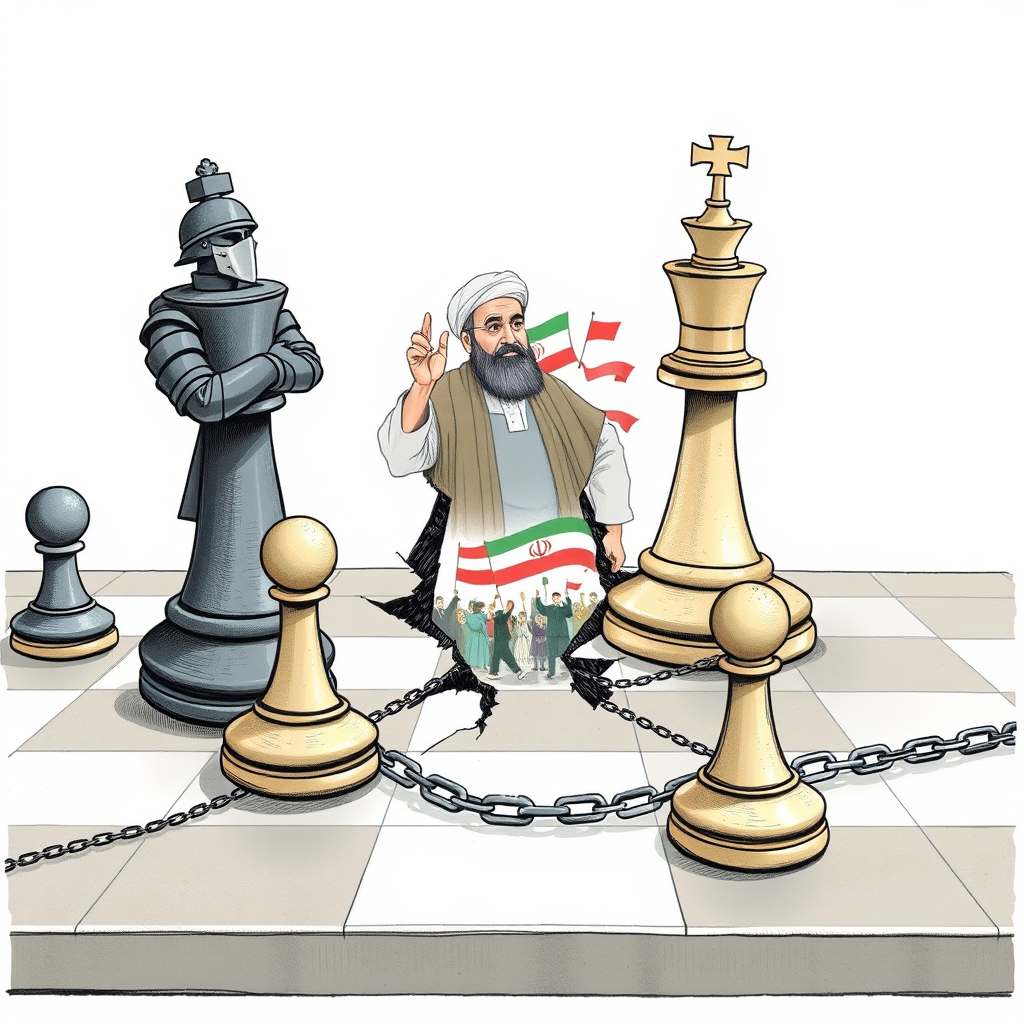Could Iran’s Regime Finally Be Toppled?

The escalating tensions between the United States, Israel, and Iran have reignited debate over the possibility of regime change in Tehran, a complex undertaking fraught with historical failures and formidable obstacles. While external pressures mount – including intensified Israeli strikes, U.S. sanctions, and calls for internal uprising – experts caution that toppling the Islamic Republic requires a confluence of factors currently absent within Iran.
Recent statements from U.S. President Donald Trump demanding “unconditional surrender” and hints at targeting Supreme Leader Ayatollah Ali Khamenei have been met with defiance from Tehran. Khamenei warned against threats and pledged retaliation for any U.S. involvement in Israel’s military operations. Israel, while officially stating it doesn’t seek regime change, appears to be subtly encouraging internal dissent, a strategy some analysts view as strategically sound.
However, history demonstrates the regime’s resilience in suppressing opposition. The Green Movement of 2009, protests in 2017 and 2019, and countless other demonstrations have been met with brutal crackdowns. Experts like Karl Kaltenthaler of the University of Akron emphasize the regime’s unbroken chain of command and the unwavering loyalty of its security forces, particularly the Islamic Revolutionary Guard Corps (IRGC). The Shah’s fall was precipitated by fracturing security forces; the current regime shows no such weakness.
A “perfect storm” is deemed necessary for meaningful change, according to Reza Khanzadeh, Senior Foreign Policy Advisor to the U.S.-Iran Chamber of Commerce. This includes severe weakening of all power structures, significant defection within the IRGC and Basij, a sustained mass uprising involving hundreds of thousands, if not millions, and – crucially – a strong opposition leader to guide the movement.
Economic pressure is seen as a key lever. Some analysts believe choking Iran’s oil revenue and banking access through sanctions could create internal collapse. However, the regime has historically proven adept at circumventing crises. Others suggest targeting the judiciary and special police units responsible for suppressing dissent would be more effective.
The role of messaging is also under scrutiny. While Israel has targeted Iranian broadcasting infrastructure, some argue a more coordinated effort to directly address the Iranian people – offering support for a specific uprising or providing limited air support – could be more impactful. The U.S. State Department has revived Farsi-language broadcasts via Voice of America, a step in this direction.
Despite increasing pressure, significant obstacles remain. A brain drain is depleting Iran of its skilled population, and many citizens are disillusioned after previous failed attempts at change. A lack of a viable opposition leader, coupled with the regime’s ideological resilience and sophisticated security apparatus, makes a sudden collapse unlikely. Even the death of Khamenei wouldn’t necessarily trigger regime change, experts say, due to the absence of a strong, organized opposition.
While some within Iran express optimism about the current situation, the challenges are immense. The potential for escalation, particularly if Washington becomes directly involved in a conflict, could have devastating consequences. A failure to achieve meaningful change could deepen the sense of betrayal and hopelessness within the country.
Ultimately, the question of regime change in Iran remains a complex and uncertain one. While external pressures are mounting, the internal dynamics within Iran, coupled with the regime’s historical resilience, suggest that a swift and decisive outcome is unlikely. A light-handed approach from Washington, coupled with a sustained and coordinated effort to support internal dissent, may offer the best, albeit limited, path toward a more positive future.